Class 10 Exam > Class 10 Notes > Biology Class 10 ICSE > Revision Notes: Human Evolution
Revision Notes: Human Evolution | Biology Class 10 ICSE PDF Download
Evolution
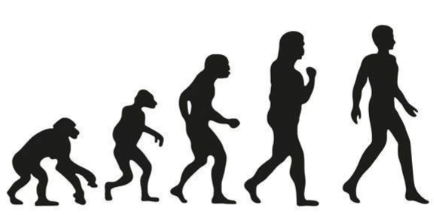
- Evolution refers to the process by which more complex organisms develop from simpler predecessors over time. This process is gradual but leads to significant changes in the forms and functions of animals and plants, originating from ancestors with different characteristics.
- At the core of evolution are variation and heredity. Variation involves differences among individuals, while heredity is the passing on of traits from parents to offspring. Evolution occurs when environmental factors select certain variations, making them more common in a population over time.
Theories of Evolution
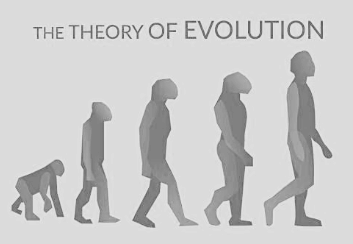
There are two main theories that explain how evolution occurs:
- Lamarckism
Lamarckism, also known as the theory of inheritance of acquired characteristics, suggests that changes in an organism's structure or function, resulting from its response to environmental changes during its lifetime, are passed on to its offspring. Over time, these changes accumulate and lead to the development of new species. Neo-Lamarckism is a revised version of this theory, emphasizing that acquired traits become part of the germplasm (genetic material) and are heritable, contributing to species evolution. - Vestigial Organs
- Vestigial organs are organs that are present in a reduced or underdeveloped form and serve no purpose in the organism. They are important for understanding evolutionary history and continuity of life.
- Humans, unlike monkeys, do not have tails, but they still have a rudimentary tailbone.
- Wisdom teeth emerge between the ages of 17 and 20 and are rarely used for chewing.
- The vermiform appendix has no significant function in humans but aids ruminants in digesting cellulose.
- The pinna, a part of the ear that transmits sound from the auditory canal to the eardrum, is another vestigial organ that is poorly developed in humans.
- Darwin’s Theory of Natural Selection
- All organisms have the potential to reproduce in large numbers.
- Overproduction of organisms leads to competition for resources like food, space, and mates.
- Only those organisms that are well-adapted to their changing environments are likely to survive.
- Organisms that are not well-adapted are eliminated and eventually die.
- In the struggle for survival, organisms that develop beneficial traits will be more likely to thrive in the long term. This is referred to as the survival of the fittest.
- Organisms that survive will pass down their advantageous traits to their offspring.
- Over time, the accumulation of these beneficial traits can lead to the formation of a new species.
Human Evolution
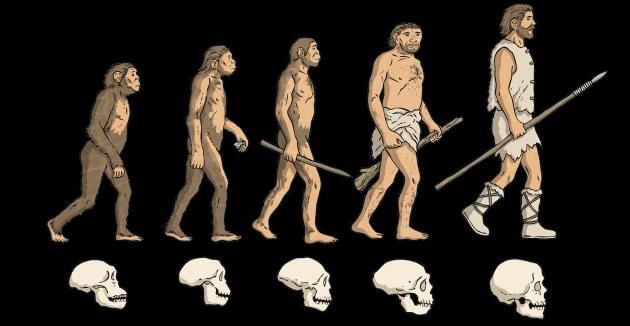
Tracing Human Evolution
- Human evolution is the most significant advancement in the history of evolution.
- Researchers study human evolution using methods like excavating, carbon dating, studying fossils, and analyzing DNA sequences.
Origin of Homo sapiens
- Early members of Homo sapiens are believed to have originated in Africa.
- Some ancestors migrated from Africa, while others remained, making all human species, regardless of location, natives of Africa.
Early Human Fossils
- The earliest human fossils include the genus Australopithecus, followed by Homo habilis, H. erectus, H. heidelbergensis, and modern humans, H. sapiens.
Evolution of Ape and Human Ancestors
- Around 25–30 million years ago, ape-like ancestors began descending from trees and evolving into ground-dwelling apes and humans.
- The separation of ape and human ancestors is estimated to have begun about 5 million years ago, leading to the evolution of Pongidae (apes) and Hominidae (humans).
Ramapithecus
- Ramapithecus was the earliest man-like fossil found in Africa and Asia, dating back about 10–15 million years ago.
- These early humans could walk upright, had small canine teeth, a short face, and a small brain.
Australopithecus afarensis
- Australopithecus afarensis emerged in South Africa and exhibited a mix of human and ape characteristics.
- This species stood about 1.05 meters tall and primarily lived on the ground, walking bipedally (on two legs).
Australopithecus africanus
- Timeline: Emerged around 2.5 million years ago in Africa.
- Physical Features: Characterized by a low forehead, protruding face, absence of a chin, and a brain capacity ranging from 350 to 450 cubic centimeters.
Homo habilis
- Era: Lived in Africa approximately 2 million years ago.
- Stature: Estimated height between 1.5 to 1.8 meters.
- Brain Size: Cranial capacity between 650 and 800 cubic centimeters, larger than that of Australopithecus.
Homo erectus
- Origin: Evolved from Homo habilis or Australopithecus around 1.7 million years ago.
- Fossil Locations: Fossils found in Java, Peking, Heidelberg, and Europe.
- Physical Characteristics: Average height of about 5.5 feet, bowl-shaped pelvis, arched foot (indicating loss of grasping ability).
- Brain Size: Cranial capacity ranging from 750 to 1100 cubic centimeters.
Homo neanderthalensis
- Timeline: Appeared around 100,000 years ago, thriving in Europe and Asia until their extinction about 25,000 years ago.
- Physical Features: Flat cranium, sloping forehead, protruding jaws, strong mandibles, and absence of a chin.
- Behavior: Known for intelligence, hunting skills, use of animal skins for clothing, and burial of the dead.
Homo sapiens fossilis (Cro-Magnon Man: Early Modern Man)
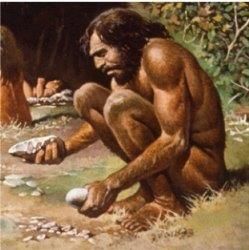
- Fossils of the Cro-Magnon man were found in north-west Italy and rock shelter caves in France, dating back to about 50,000 years ago.
- Cro-Magnon men were approximately 1.8 meters tall, with a robust physique and less body hair. They had a large cranial capacity of around 1650 cc.
Homo sapiens sapiens (Modern Man)
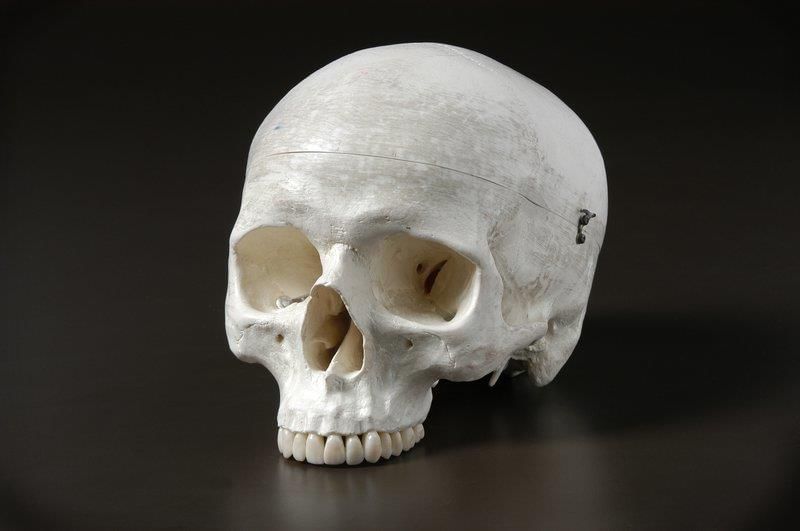
- Modern humans are believed to have evolved from the Cro-Magnon man around 25,000 years ago.
- This evolution involved minor changes in physical structure, such as thinner skull bones and a slight reduction in cranial capacity, which now ranges from 1300 to 1600 cc.
The document Revision Notes: Human Evolution | Biology Class 10 ICSE is a part of the Class 10 Course Biology Class 10 ICSE.
All you need of Class 10 at this link: Class 10
|
55 videos|110 docs|21 tests
|
FAQs on Revision Notes: Human Evolution - Biology Class 10 ICSE
| 1. What are the main theories of evolution? |  |
Ans. The main theories of evolution include Natural Selection, proposed by Charles Darwin, which suggests that organisms better adapted to their environment tend to survive and produce more offspring. Another important theory is the Modern Synthesis, which combines Darwin's ideas with Mendelian genetics, explaining how evolution occurs through genetic variation and inheritance. Other theories include Genetic Drift, emphasizing random changes in allele frequencies, and Punctuated Equilibrium, which posits that species remain relatively stable for long periods, interspersed with brief periods of rapid change.
| 2. How did Homo sapiens fossilis differ from modern Homo sapiens? |  |
Ans. Homo sapiens fossilis, commonly known as Cro-Magnon Man, lived around 40,000 years ago and is considered an early modern human. They had robust physiques, a high forehead, and a prominent brow ridge, distinguishing them from earlier hominins. Cro-Magnon Man used advanced tools, created art, and exhibited complex social structures. In contrast, modern Homo sapiens (Homo sapiens sapiens) have more delicate features, a rounded skull, and a smaller brow ridge, reflecting evolutionary changes over millennia.
| 3. What is the significance of studying human evolution? |  |
Ans. Studying human evolution is significant because it helps us understand our origins, biological development, and the adaptive changes that have shaped our species. It provides insights into our anatomy, behavior, and cultural evolution. Understanding human evolution also sheds light on how environmental changes and migration patterns have influenced human diversity and health, aiding in the study of genetic diseases and the impact of modern lifestyles.
| 4. What evidence supports the theory of human evolution? |  |
Ans. Evidence supporting the theory of human evolution includes fossil records, which document the physical changes in hominins over time, such as changes in skull size and shape. Archaeological findings of tools and art demonstrate cognitive development. Genetic studies also provide evidence of common ancestry among species, showing how DNA similarities among humans and other primates support evolutionary theory. Additionally, comparative anatomy and embryology reveal shared characteristics that indicate a common evolutionary origin.
| 5. How did Homo sapiens sapiens come to dominate the planet? |  |
Ans. Homo sapiens sapiens, or modern humans, came to dominate the planet through a combination of factors, including advanced cognitive abilities, social structures, and technological innovations. Their capacity for complex language and communication facilitated cooperation and cultural transmission. The development of tools and mastery of fire allowed for better resource utilization. Additionally, their ability to adapt to various environments through migration and innovation contributed to their survival and dominance over other hominins and species.
Related Searches
















